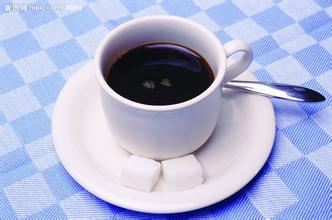A brief introduction to the history and culture of the origin and development of crisp Sidamo G3-flavored coffee beans

The Guji region is located southeast of the Gedeo region, which produces yega caffeine, at an altitude of 2100 meters, but it is higher than the yega region, with a maximum altitude of more than 2600 meters. Guji coffee flavor is very rich and unrestrained, can challenge yejia sherbet coffee
A recent favorite SOE(Single Origin Espresso)-uses a coffee bean to make espresso.
"Lion King" comes from Ethiopia's Sidama Guji region and is an ancient native premium variety: Heirloom, washed, moderately roasted.
Different from the regular American coffee or latte, this series of coffee will have fresh flowers, natural berries and sour, worth savoring.
1. After picking, the beans have not been specially selected and treated, and the uneven quality and maturity are mixed together. The process is relatively rough, so the quality of coffee beans is unstable and easy to have defective beans.
2. Coffee farmers usually find a vacant lot near their homes to deal with, so there are often a lot of impurities or dirty things on the ground, and coffee is easily contaminated with impurities.
1. After picking, the beans have not been specially selected and treated, and the uneven quality and maturity are mixed together. The process is relatively rough, so the quality of coffee beans is unstable and easy to have defective beans.
2. Coffee farmers usually find a vacant lot near their homes to deal with, so there are often a lot of impurities or dirty things on the ground, and coffee is easily contaminated with impurities.
Shakisso, located in Guji, south of Oromia region, next to Sidama and Gedeo. Shakisso/Shakisso coffee is quite unique, and the coffee produced has repeatedly received market attention. Ninety Plus 'legendary bean (nekisse) originally meant nectar from Shakisso, and its production area and name are from Shakisso.
Local smallholders in the area started growing organic coffee in 2001 and work closely with medium-sized coffee producers who know how to grow forest coffee in the upland. It is one of the micro-production areas with very regional characteristics in the Sidamo production area. The coffee produced in this region is quite unique, and the coffee produced has repeatedly received market attention. Ninety Plus 'legendary bean (nekisse) originally means Nectar from shakisso, and its production area and name are all from shakisso.
After obtaining the green coffee beans, sometimes in order to pursue the perfect taste, there will be a final screening, so this sun-dried sidamole can reach the highest level of G1.
Yirgacheffe, with its unique aroma, comes from a small town called Yirga in the northwest of Sidamo province. Yerga Sherphine (Yirgacheffe) Coffee beans are one of the most distinctive coffees in the world. They are rare and expensive. They are produced in the plateau area of Sidamo Province, Ethiopia, at an altitude of 2,000 meters. They are outstanding representatives of African washed coffee. They have always enjoyed a good reputation in the eyes of coffee connoisseurs all over the world. Rare washed high-quality Arabica coffee is suitable for various degrees of roasting. It perfectly presents fresh and bright floral aroma and beautiful complete bean type. Mocha is generally difficult to match the high-end coffee. Unique citrus, lemon fruit aroma, but also with jasmine fragrance, has a similar sour wine, taste clean and no miscellaneous feeling, just like drinking freshly cooked citrus fruit tea aftertaste lasting. Floral and citrus aromas are full, and the performance is amazing. After moderate roasting, it has a soft sour taste, and after deep roasting, it emits a rich aroma. Rich and uniform taste is the most attractive feature of Ethiopian Yerga Coffee. It is known as the best coffee bean in Ethiopia and is the representative of East African fine coffee. Yerga Coffee is the most unique coffee in the world today.
Washing-type coffee flavor is less likely to have wild flavor, with pure, refreshing characteristics, suitable for City to Full City roasting degree; some excellent Ethiopian washing-type coffee beans, sometimes can be perceived as obvious lemon, citrus essential oils, jasmine flowers, honey flavor, etc., sour more obvious, mellow feeling thin. Sun-treated mocha beans have wild flavor in basic flavor, but the degree or more and less difference, more suitable for Full City to Vienna baking degree performance. Excellent sun, mocha beans, with a distinct chocolate finish, some with a pleasant blueberry-like fermented fruity and red wine texture. Mocha is generally difficult to match the high-end coffee. Unique citrus, lemon fruit aroma, but also with jasmine fragrance, has a similar sour wine, taste clean and no miscellaneous feeling, just like drinking freshly cooked citrus fruit tea aftertaste lasting. Floral and citrus aromas are full, and the performance is amazing. After moderate roasting, it has a soft sour taste, and after deep roasting, it emits a rich aroma. Rich and uniform taste is the most attractive feature of Ethiopian Yerga Coffee. It is known as the best coffee bean in Ethiopia and is the representative of East African fine coffee. Yerga Coffee is the most unique coffee in the world today.
Lightly roasted Yirgacheffe, roasted on low heat for 15 minutes (210 ° C). Turn off the heat and slide for half a minute. Immediately cool the beans and blow off the silver skin. The coffee beans are roasted evenly (because the raw beans are washed and clean) and brown. When using the hand-operated coffee mill, it feels very good, smooth and moderate resistance. The dry aroma of coffee powder just started to smell a little earthy, and immediately there was a strong, restrained aroma. After brewing wet fragrance, there are obvious orange fruit, but also some similar hawthorn, fruit cortex moutan sweet and sour taste. The palate is slightly light and balanced, with a slight mild acidity, rich in oil and long lasting foam.
Medium dark roast Yirgacheffe, low heat roast to 17 minutes (230 degrees Celsius), turn off the heat and slide for half a minute. Immediately cool the beans and blow off the silver skin. There is a slight oil on the surface of the coffee beans. The beans are dark brown. The beans are light, the resistance is very small when grinding with a hand coffee mill, and it is not easy to get beans. The dry aroma of coffee powder has a strong burnt aroma and a faint African earthy smell. After brewing, the wet fragrance has a good scorched fragrance. After baking deeper, it seems that there is no regional characteristic of orange fragrance. However, after sipping coffee, it is very rich, fragrant and pleasant, rich in variety, gentle acid, bitterness and astringency are well reflected, the texture is thick, the viscosity is better than that of shallow baking, and the aftertaste is long.
Washing-type coffee flavor is less likely to have wild flavor, with pure, refreshing characteristics, suitable for City to Full City roasting degree; some excellent Ethiopian washing-type coffee beans, sometimes can be perceived as obvious lemon, citrus essential oils, jasmine flowers, honey flavor, etc., sour more obvious, mellow feeling thin. Sun-treated mocha beans have wild flavor in basic flavor, but the degree or more and less difference, more suitable for Full City to Vienna baking degree performance. Excellent sun, mocha beans, with a distinct chocolate finish, some with a pleasant blueberry-like fermented fruity and red-wine texture
Important Notice :
前街咖啡 FrontStreet Coffee has moved to new addredd:
FrontStreet Coffee Address: 315,Donghua East Road,GuangZhou
Tel:020 38364473
- Prev

A brief introduction to the description of the flavor, taste and aroma characteristics of bright Sidamo G3 coffee beans
Sidamo Coffee includes Yirgachefe Yega Snow Coffee and guji Coffee, which are of excellent quality. The main producing areas of Ethiopian coffee are Harar in the east, Djimmah in the southwest and Sidamo in the south. Yirgacheffe, with its unique aroma, comes from Sidamo.
- Next

A brief introduction to the transaction Price of High Sweet Sidamo Coffee Bean varieties in the planting Market
The geographical environment of Ethiopia is very suitable for coffee growth. Currently, about 25% of the Ethiopian population depends directly or indirectly on coffee production for a living. Since most local farmers still care for coffee trees manually and do not use harmful pesticides and herbicides, most of the coffee produced in Ethiopia is organic coffee, which is the main cash crop in Angola and the first in Burundi.
Related
- Detailed explanation of Jadeite planting Land in Panamanian Jadeite Manor introduction to the grading system of Jadeite competitive bidding, Red bid, Green bid and Rose Summer
- Story of Coffee planting in Brenka region of Costa Rica Stonehenge Manor anaerobic heavy honey treatment of flavor mouth
- What's on the barrel of Blue Mountain Coffee beans?
- Can American coffee also pull flowers? How to use hot American style to pull out a good-looking pattern?
- Can you make a cold extract with coffee beans? What is the right proportion for cold-extracted coffee formula?
- Indonesian PWN Gold Mandrine Coffee Origin Features Flavor How to Chong? Mandolin coffee is American.
- A brief introduction to the flavor characteristics of Brazilian yellow bourbon coffee beans
- What is the effect of different water quality on the flavor of cold-extracted coffee? What kind of water is best for brewing coffee?
- Why do you think of Rose Summer whenever you mention Panamanian coffee?
- Introduction to the characteristics of authentic blue mountain coffee bean producing areas? What is the CIB Coffee Authority in Jamaica?

